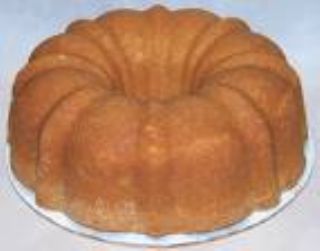Directions: |
Directions:Sift the flour, baking soda,and baking powder
into a large mixing bowl. Stir in salt and
the sugar. I use a large spoon for this. Next I add
the butter. My grandmother would melt the butter
in a pan over slow heat to make it blend easier.
You can do this or just let the butter soften at
room temperature. Add the eggs, whole. At this
point I break out my mixer and begin mixing on
slow. I slowly add my buttermilk, and then the
vanilla extract. After it is thoroughly stirred,
I turn the mixer up to medium for a few minutes,
and then finally on high. If the mixture is a little
thick I add just a touch more buttermilk. If you don't
mix things thoroughly you will have lumps that will
form air bubbles in your mixture and leave holes
in your finished cake. It was always a matter of pride
not to have these air pocket holes in our cakes so we
always made sure we got all of the lumps. In the
pre-electric-mixer day that involved a lot of whipping
the cake by hand. We usually didn't have a hand cranked
mixer
that worked well, so this involved a large mixing spoon
to whip it. Some old timers even counted the number
of times they whipped the mixture - sort of made it
fun and you didn't notice your arm tiring.
Preheat the oven to 325 degrees.
Take your standard tube cake pan and oil it with
butter. Then lightly flour the oiled pan. Shake
the excess flour from the pan.
Pour the mix in, bake the cake for about 1 hour
and twenty minutes. Keep looking at how your cake
is doing through the oven door but avoid opening
the door too much while it is cooking as I have
seen this, or jarring a cake, cause it to collapse.
When you think it is done, do the toothpick test.
Stick a wooden toothpick into one of the thickest
parts of the cake. If it's dry when you pull it our,
the cake is done.
Allow the cake to cool 15 or 20 minutes in the pan.
Then gently remove it, and stick it on your favorite
decorative cake plate. |

